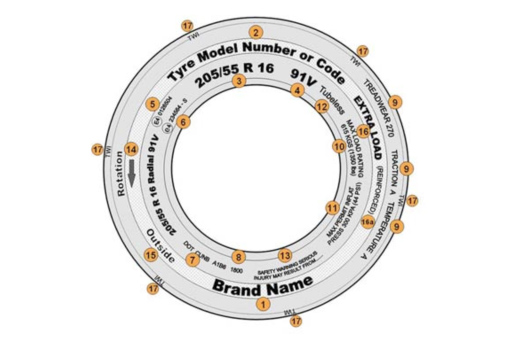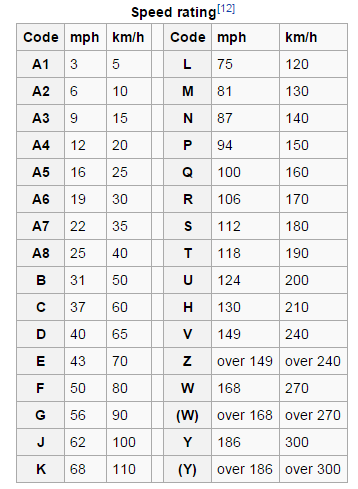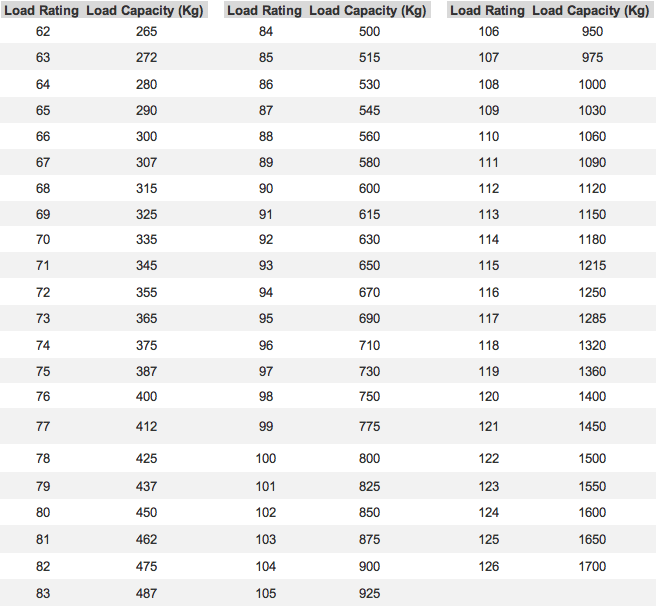Tyre Marking Explained
Decoding The Tyre Sidewall
What does all the writing on the
side of my tyre mean?
The markings on a tyre may look confusing but they are actually very important. Each marking provides a vital piece of information about the specification of each tyre. This includes information such as the maximum the tyre can safely sustain; the loads it can carry and the safety standards it meets.

1. Brand of the tyre - e.g. Continental
2. Tyre pattern. e.g. MA-Z1
3. Tyre size - The width of the tread expressed in millimetres, e.g. 205; the aspect ratio - height of the tyre's sidewall as a percentage of the width, e.g. 55%; and the diameter of the tyre's centre hole, (in inches) e.g. 16". The letter between the numbers is the type of construction i.e. ‘R' Radial. e.g. 205/55R16
4. Service description - in this example the figure 91 denotes the maximum weight capacity of the tyre according to the official load index table, which translates to 615 Kg, The letter V indicates the speed rating of the tyre, in this case the tyre suitable for cars capable of reaching a maximum vehicle speed of 149.1 mph.
5. ECE (Economic Commission for Europe) Regulation 30 Conformity Approval Number - which means that the tyre meets the standards of the European Regulatory Authorities.
6. EEC Noise Approval Number, which means that the noise generated by the tyre is within approved European limits.
7. USA Department of Transport manufacturer's code. This has no relevance to the Irish market
8. Date of manufacture. This is important as the age of a tyre can affect its performance. The first 2 numbers refer to the week and the 3rd and 4th numbers refer to the year
9. USA UTQG (Uniform Tire Quality Grade) ratings. This has no significance in the Irish market..
10. USA maximum tyre loading. This has no significance in Ireland
11. USA maximum tyre inflation pressure. This has no significance in the Ireland
12. Denotes tubeless construction
13. Safety warning refers to the dangers of under-inflation/overloading and the mounting of tyres together with the risk of severe over - inflation.
14. Direction of rotation which relates to directional tyres only.
15. Outer/inner sidewall refers to the mounting of asymmetric tyres only. These tyres have different tread patterns on their inner and outer sides, offering improved performance, and must be fitted correctly.
16. Extra load version where applicable
17. TWI indicates the location of the tread wear indicators, which are raised areas at the base of the tread to serve as a visual warning that the tyre is approaching or at the minimum legal tread depth
The Load Index
The Load Index is a numerical code associated with the maximum load a tyre can carry (except for loads at speeds above 210 Km/h) at a speed indicated its Speed Symbol under service conditions specified by the tyre manufacturer.


